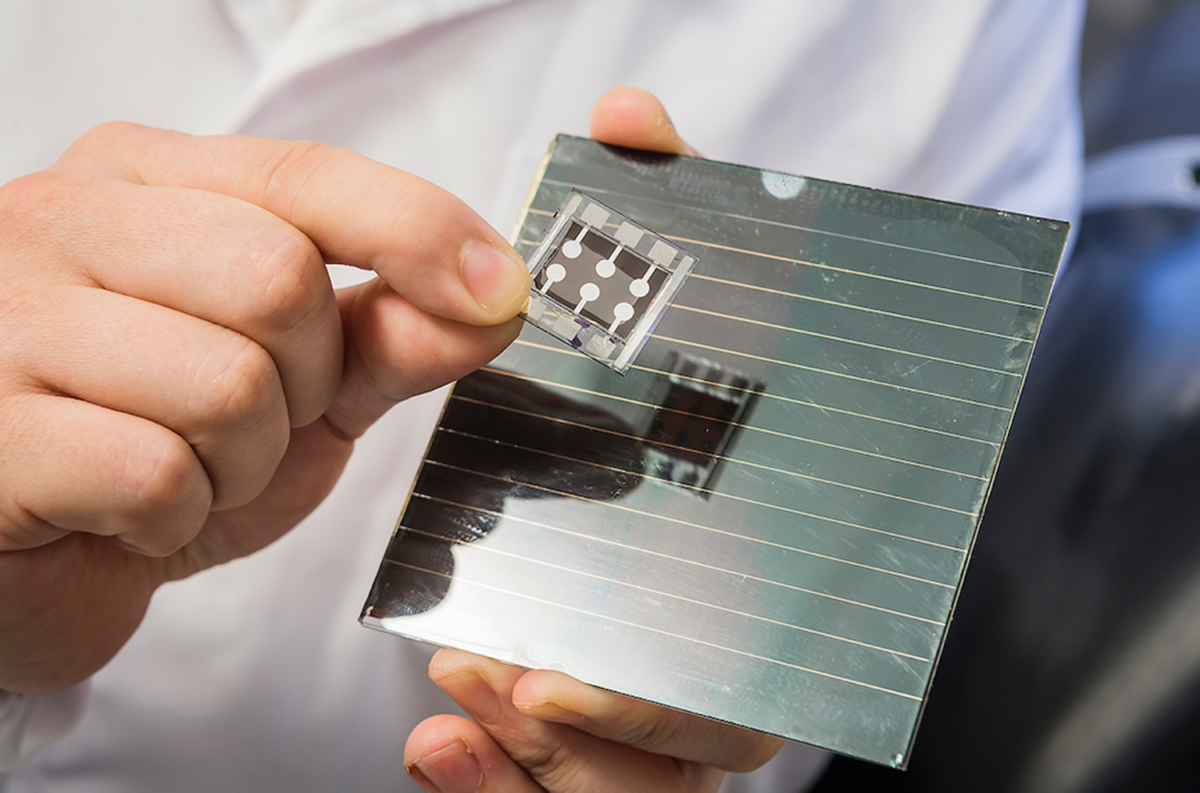From pv magazine Global
Researchers at the City University of Hong Kong (CityUHK) have presented a new fabrication technique for perovskite solar cells.
The team developed two innovations in the structure of perovskite solar cells. The first involved integrating the hole-selective materials and the perovskite layers, to simplify the manufacturing process.
The second involved replacing traditional organic materials, such as fullerene and bathocuproine (BCP), with tin oxide (SnO₂), an inorganic electron transport layer, in a process known as the atomic layer deposition (ALD) method. The ALD created an oxygen-deficient tin oxide layer, which reduced the band offset to a thicker, overgrown layer of normal tin oxide. This was found to greatly enhance the operational stability of a device.
The work is presented in the paper “Long-term stability in perovskite solar cells through atomic layer deposition of tin oxide,” available in the journal Science. The research team says their new fabrication technique enhances the prospects of commercializing perovskite solar cells through improved stability, reliability, efficiency and affordability.
“The device structure reported in this study represents the most simplified architecture in the current field of perovskite solar cells, offering significant advantages for industrialization,” said Gao Danpeng, co-author of the paper. He added that as the solution does not require a traditional organic transfer layer, the material cost in the manufacturing process is reduced and the production is simplified.
The research paper documents how the team’s fabricated cell achieved a power conversion efficiency of over 25% after optimizing oxygen vacancy defects within the tin oxide layer. The cell also demonstrated superior stability compared to traditional perovskite solar cells, as it retained over 95% of its efficiency after 2,000 hours of continuous operation under rigorous test conditions.
The researchers are planning for the next phase of their research to focus on applying their new structure to larger perovskite solar modules.
“With the potential to be implemented in solar energy systems within the next five years, this research is a critical step towards achieving more sustainable and environmentally friendly energy production globally,” said Professor Zhu Zonglong of CityUHK’s Department of Chemistry.
The research was conducted in collaboration with teams from the National Renewable Energy Laboratory and Imperial College London.
This content is protected by copyright and may not be reused. If you want to cooperate with us and would like to reuse some of our content, please contact: editors@pv-magazine.com.








1 comment
By submitting this form you agree to pv magazine using your data for the purposes of publishing your comment.
Your personal data will only be disclosed or otherwise transmitted to third parties for the purposes of spam filtering or if this is necessary for technical maintenance of the website. Any other transfer to third parties will not take place unless this is justified on the basis of applicable data protection regulations or if pv magazine is legally obliged to do so.
You may revoke this consent at any time with effect for the future, in which case your personal data will be deleted immediately. Otherwise, your data will be deleted if pv magazine has processed your request or the purpose of data storage is fulfilled.
Further information on data privacy can be found in our Data Protection Policy.